- Help & FAQ

Find Research Projects
- concept Search across key concepts extracted from titles and abstracts
- matching text Search across indexed text content in Pure, such as names, titles, descriptions etc.
Filters for Projects
- 1 - 50 out of 814 results
- Status, start date (ascending)
Search results
The future of living in smart cities: privacy in the smart home at the crossroads of psychology and law.
De Conca, S. , Huijts, N., Wisman, T. & van der Zeeuw, A.
1/05/24 → 30/04/25
Project : Research
Connecting Climate Discourse and Religious Language
Çelik, Y. , van Peursen, W. , Bhulai, S. , Hasselaar, J. J. & Morren, M.
5/04/24 → …
Pilot Interprofessioneel leren in de zorg voor mensen met een beperking
Willemen, A. , Wouda, M., Sterkenburg, P. , Ben Salah, R. & van der Weck, S.
1/04/24 → 1/04/26
Green adaptation pathways for resilient basin futures under increasing extreme floods and droughts
Schaafsma, M. & Wens, M.
1/04/24 → 31/03/27
ModelPlaza: an open platform for computer simulations of past socio-ecological systems
Verhagen, P. & Daems, D.
1/04/24 → 31/12/24
Characterizing cognitive symptomatology in older adults with brain tumors
Butterbrod, E.
1/04/24 → 31/03/28
ANTICO: Elevating Anti-corruption: Understanding the emergence of moral justification as a source of integrity violations and fixing it
Weißmüller, K. S. , Eski, Y. & Jongen, H.
1/02/24 → 31/01/27
Stimulation Grant - de Graaff
de Graaff, N. & Tyler, A.
1/01/24 → 31/12/28
Exploring boundary experiments to accelerate sustainability transitions
Kok, K. & Spruit, R.
1/01/24 → 31/01/28
Uncovering Biased Language Use: Implicit Communication of Stereotypes in Natural Language
Sommerauer, P. , Beukeboom, C. , Jansen, M. & Beenen, K.
1/01/24 → 30/06/28
Identity Politics and Inclusive Public Deliberation: Construction, Composition and Consequences of Dominant and Marginalized Group Communication
1/01/24 → 31/12/26
Globalization Unravelling? The Geopolitics of Europe-China Tech Decoupling - NWO VIDI
de Graaff, N.
SOURCE: Sand nOURishment strategies for sustainable Coastal Ecosystems
Schaafsma, M. & Robinson, P. J.
1/01/24 → 31/12/29
NWO-VENI Grant: How admission policies and peers affect equality of access to education"
From plates to bones an inquiry into ancient lead intake and the applicability of the lead isotope system for tracing ancient human mobility.
Kootker, L. & Merkel, S.
1/01/24 → 30/12/24
CINEAGRI: Global Elements of Cinema - Tracing Agricultural Materials in the History of Celluloid Film Manufacturing
Jancovic, M.
Jaarplan 2024 Academische Werkplaats Viveon
van Tuyll van Serooskerken, J. , Leeuwis, F., van Rest, M. , Bakkum, L. , Schutte, P. B., Patty, N. , van Meeteren, K. & Bouaouida, I.
1/01/24 → 31/12/24
Involvement of the Heritage Community in the Endangered Heritage of Slavery in St. Eustatius
Lynch, D. , Cuvalay, K., Ploeg, P., Simmons, D., Kok, M., King Jorde, P., van Neel, A., Tjien Fooh, J. & Blokbergen, E.
Institutioneel nieuws: formuleringen in kop en tekst die lezers trekken en behouden
Houwing, F. , Welbers, K. , Lagerwerf, L. , Coudron, Y. & van Loenen, G.
1/01/24 → 31/10/24
ENHANCE: Enhancing Sustainable Travel in Small Cities and Outer Metropolitan Areas
Koomen, E. & Jin, T.
Werk en mantelzorg: een onderzoek naar wederzijdse afhankelijkheid in de levensloop
Broese Van Groenou, M. , de Boer, A. & Zegers, A.
1/01/24 → 31/12/25
Innovating Preparedness by Leveraging SYNERGIES and Enhancing Results of DRM Projects
Boersma, K. & Clark, N. E.
1/12/23 → 30/11/26
Challenge and motor learning during physical eduction
van der Kooij, K.
1/12/23 → 1/01/27
Buiten de muren blijven, onderzoek naar duurzame arbeidstoeleiding (ex-)gedetineerden
Bosselaar, H.
1/12/23 → 1/12/26
Budget impact analysis of Pilates exercises for the management of low back pain in the Brazilian public health system
Luiz Carregaro, R. , Bosmans, J. E. , Jornada Ben, A. & van Dongen, H.
2/11/23 → …
Climate Change and Conflict
de Bie, J. & van Wijk, J.
1/11/23 → …
PhD project on Moral Leadership and Calling
van Krimpen, T. , Solinger, O. & Schaafsma, P.
Judges vs Illiberalism: Legal Mobilization for the Rule of Law
Cebulak, P.
1/11/23 → 31/10/26
Harbingers of change? Social entrepreneurship's potential for economic transformation
1/11/23 → 31/10/24
Improving care for people with low back pain: A study of longitudinal outcome trajectories and adherence to guidelines.
Rubinstein, S. , Ostelo, R. , Maas, E. , van der Vossen, B. & de Zoete, A.
2/10/23 → 30/09/27
Engaged Scholarship against Climate Change
Wels, H. , Jonkman, J. , Clark, N. E. , Vrabiescu, I. & Horvath, A.
1/10/23 → 30/04/27
MoD: Museum of Dreams: Silent Antiquity Films in the BFI National Archive (2023-2026)
Blom, I. , Wyke, M., Attacan, A. & Dixon, B.
1/10/23 → 1/10/26
Dolinsky, A.
1/10/23 → 30/09/25
How do European police forces deal with (violent) disturbances by non-institutionalized protest groups? A study by Don Weenink & Laura Keesman funded by Politie & Wetenschap.
Keesman, L. & Weenink, D.
1/10/23 → …
Overgewicht en obesitas bij volwassenen en kinderen
Halberstadt, J. , van der Voorn, B. , Koetsier, L. & IJzerman, R.
1/10/23 → 31/12/25
Longitudinal change in Physical Activity components among older adults; the use of Latent Class Growth Analyses, Latent Class Growth Mixture Models, and Sequence Analyses
Hoogerheide, B. , Maas, E. , Schaap, L. , Visser, M. & Hoekstra, T.
4/09/23 → 3/08/24
FlyBAL: The flying timber: A glocal political ethnography of balsa extractivism and its implications for its main region of supply: the Ecuadorian Amazonia
Oikonomakis, L.
1/09/23 → 31/08/25
Templeton Grant: "A valid statistical framework for establishing unconscious cognition"
Fahrenfort, J.
TAP dementia - digital assessment of daily functioning in primary care
1/09/23 → …
Big data analysis to improve the labour market and educational participation of young people with mental health problems.
Nollet, M. , Vooren, M. , Bakkum, L. , Cornelisz, I. & van Klaveren, C.
1/09/23 → 31/08/28
Critical minerals and the clean energy transition
Noailly, J. , van der Meijden, G. & Poelhekke, S.
1/09/23 → 1/09/27

FlyBal: Marie Sklodowska Curie Individual Fellowship
The final criminological frontier: envisioning space crime in vr.
van Sintemaartensdijk, I. & Eski, Y.
1/09/23 → 1/09/24
Online blauw-Een onderzoek naar de omgang met digitale criminaliteit op basisteams
van Steden, R. & Valk-van Waarde, D.
1/09/23 → 31/12/24
CirCol : Circular Collaboration (CirCol): Delivering circular renovation at scale through multi-cycle, multi-scalar and multi-level collaboration
van Marrewijk, A. & van Rijn, I.
1/09/23 → 30/09/27
Ethics of Bodies: how does desire orient the pursuit of pleasure?
Saramifar, Y.
1/09/23 → 1/01/25
Mental Health and Psychosocial Support - Training for Trans Human Rights Defenders in Colombia
Zuiderent-Jerak, T. & Martinez Apraez, L.
1/09/23 → 31/08/24
Valuing visuals: What elements attract viewers of paintings and Instagram photos?
Lagerwerf, L. , Jehoel, G. , Yau, M. & Lukáčová, S.
1/09/23 → 31/10/24
Restricting raw material exports
Poelhekke, S.
Stimuleringsbeurs Verduijn
Lage Arias, S.
1/09/23 → 31/03/27
Gemini breaks new ground with a faster model, longer context, AI agents and more
May 14, 2024
[[read-time]] min read
We’re introducing a series of updates across the Gemini family of models, including the new 1.5 Flash, our lightweight model for speed and efficiency, and Project Astra, our vision for the future of AI assistants.

In December, we launched our first natively multimodal model Gemini 1.0 in three sizes: Ultra, Pro and Nano. Just a few months later we released 1.5 Pro , with enhanced performance and a breakthrough long context window of 1 million tokens.
Developers and enterprise customers have been putting 1.5 Pro to use in incredible ways and finding its long context window, multimodal reasoning capabilities and impressive overall performance incredibly useful.
We know from user feedback that some applications need lower latency and a lower cost to serve. This inspired us to keep innovating, so today, we’re introducing Gemini 1.5 Flash : a model that’s lighter-weight than 1.5 Pro, and designed to be fast and efficient to serve at scale.
Both 1.5 Pro and 1.5 Flash are available in public preview with a 1 million token context window in Google AI Studio and Vertex AI . And now, 1.5 Pro is also available with a 2 million token context window via waitlist to developers using the API and to Google Cloud customers .
We’re also introducing updates across the Gemini family of models, announcing our next generation of open models, Gemma 2 , and sharing progress on the future of AI assistants, with Project Astra .
Context lengths of leading foundation models compared with Gemini 1.5’s 2 million token capability
Gemini family of model updates
The new 1.5 flash, optimized for speed and efficiency.
1.5 Flash is the newest addition to the Gemini model family and the fastest Gemini model served in the API . It’s optimized for high-volume, high-frequency tasks at scale, is more cost-efficient to serve and features our breakthrough long context window.
While it’s a lighter weight model than 1.5 Pro, it’s highly capable of multimodal reasoning across vast amounts of information and delivers impressive quality for its size.

The new Gemini 1.5 Flash model is optimized for speed and efficiency, is highly capable of multimodal reasoning and features our breakthrough long context window.
1.5 Flash excels at summarization, chat applications, image and video captioning, data extraction from long documents and tables, and more. This is because it’s been trained by 1.5 Pro through a process called “distillation,” where the most essential knowledge and skills from a larger model are transferred to a smaller, more efficient model.
Read more about 1.5 Flash in our updated Gemini 1.5 technical report , on the Gemini technology page , and learn about 1.5 Flash’s availability and pricing .
Significantly improving 1.5 Pro
Over the last few months, we’ve significantly improved 1.5 Pro, our best model for general performance across a wide range of tasks.
Beyond extending its context window to 2 million tokens, we’ve enhanced its code generation, logical reasoning and planning, multi-turn conversation, and audio and image understanding through data and algorithmic advances. We see strong improvements on public and internal benchmarks for each of these tasks.
1.5 Pro can now follow increasingly complex and nuanced instructions, including ones that specify product-level behavior involving role, format and style. We’ve improved control over the model’s responses for specific use cases, like crafting the persona and response style of a chat agent or automating workflows through multiple function calls. And we’ve enabled users to steer model behavior by setting system instructions .
We added audio understanding in the Gemini API and Google AI Studio , so 1.5 Pro can now reason across image and audio for videos uploaded in Google AI Studio. And we’re now integrating 1.5 Pro into Google products, including Gemini Advanced and in Workspace apps. Read more about 1.5 Pro in our updated Gemini 1.5 technical report and on the Gemini technology page .
Gemini Nano understands multimodal inputs
Gemini Nano is expanding beyond text-only inputs to include images as well. Starting with Pixel, applications using Gemini Nano with Multimodality will be able to understand the world the way people do — not just through text, but also through sight, sound and spoken language.
Read more about Gemini 1.0 Nano on Android .
Next generation of open models
Today, we’re also sharing a series of updates to Gemma , our family of open models built from the same research and technology used to create the Gemini models.
We’re announcing Gemma 2 , our next generation of open models for responsible AI innovation. Gemma 2 has a new architecture designed for breakthrough performance and efficiency, and will be available in new sizes.
The Gemma family is also expanding with PaliGemma , our first vision-language model inspired by PaLI-3 . And we’ve upgraded our Responsible Generative AI Toolkit with LLM Comparator for evaluating the quality of model responses.
Read more on the Developer blog .
Progress developing universal AI agents
As part of Google DeepMind’s mission to build AI responsibly to benefit humanity, we’ve always wanted to develop universal AI agents that can be helpful in everyday life. That’s why today, we’re sharing our progress in building the future of AI assistants with Project Astra (advanced seeing and talking responsive agent).
To be truly useful, an agent needs to understand and respond to the complex and dynamic world just like people do — and take in and remember what it sees and hears to understand context and take action. It also needs to be proactive, teachable and personal, so users can talk to it naturally and without lag or delay.
While we’ve made incredible progress developing AI systems that can understand multimodal information, getting response time down to something conversational is a difficult engineering challenge. Over the past few years, we've been working to improve how our models perceive, reason and converse to make the pace and quality of interaction feel more natural.

A two-part demo of Project Astra, our vision for the future of AI assistants. Each part was captured in a single take, in real time.
Building on Gemini, we’ve developed prototype agents that can process information faster by continuously encoding video frames, combining the video and speech input into a timeline of events, and caching this information for efficient recall.
By leveraging our leading speech models, we also enhanced how they sound, giving the agents a wider range of intonations. These agents can better understand the context they’re being used in, and respond quickly, in conversation.
With technology like this, it’s easy to envision a future where people could have an expert AI assistant by their side, through a phone or glasses. And some of these capabilities are coming to Google products, like the Gemini app and web experience , later this year.
Continued exploration
We’ve made incredible progress so far with our family of Gemini models, and we’re always striving to advance the state-of-the-art even further. By investing in a relentless production line of innovation, we’re able to explore new ideas at the frontier, while also unlocking the possibility of new and exciting Gemini use cases.
Learn more about Gemini and its capabilities .

Here’s a look at everything we announced at Google I/O 2024.
Get more stories from Google in your inbox.
Your information will be used in accordance with Google's privacy policy.
Done. Just one step more.
Check your inbox to confirm your subscription.
You are already subscribed to our newsletter.
You can also subscribe with a different email address .
Related stories
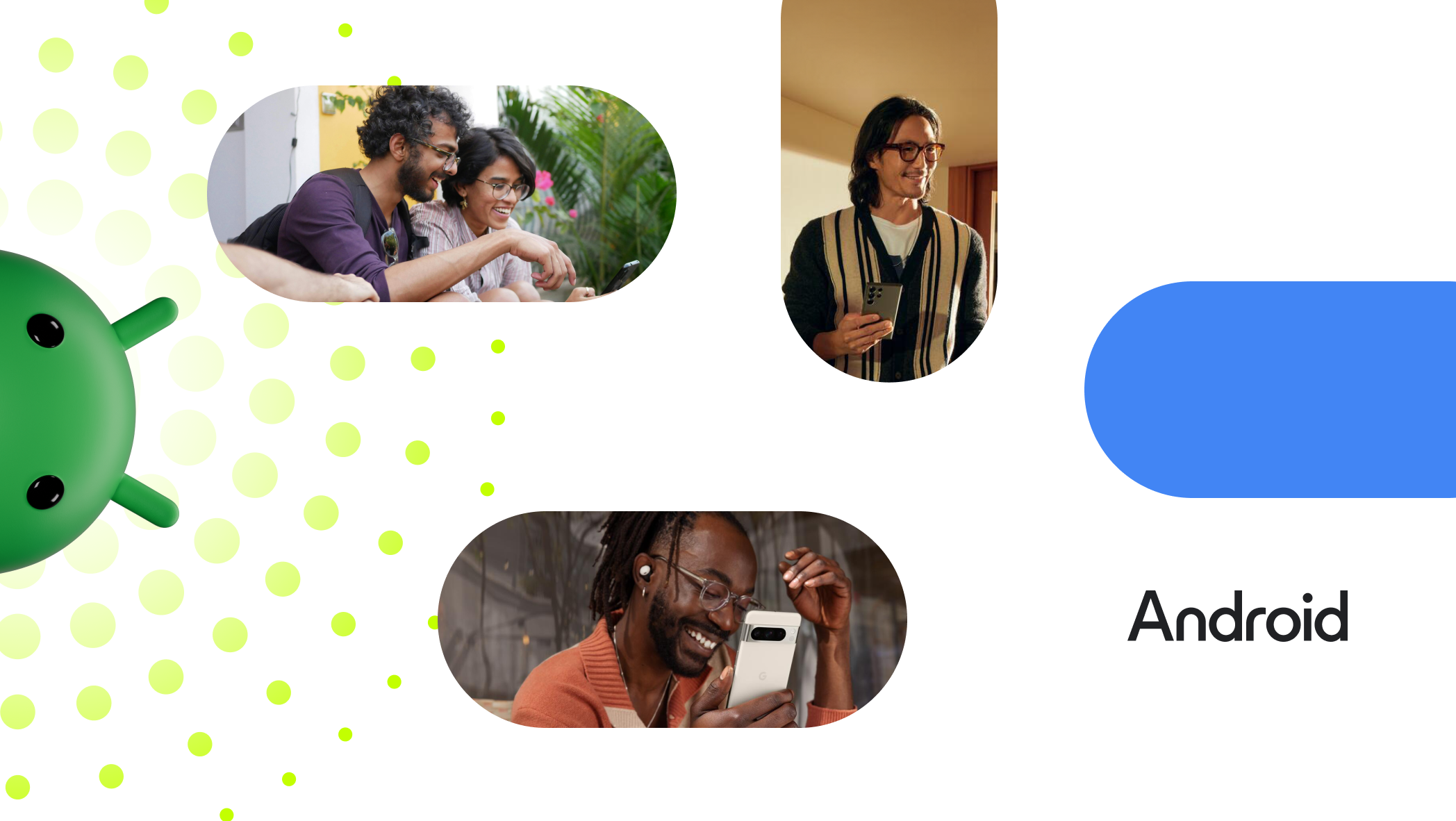
3 new ways to use Google AI on Android at work
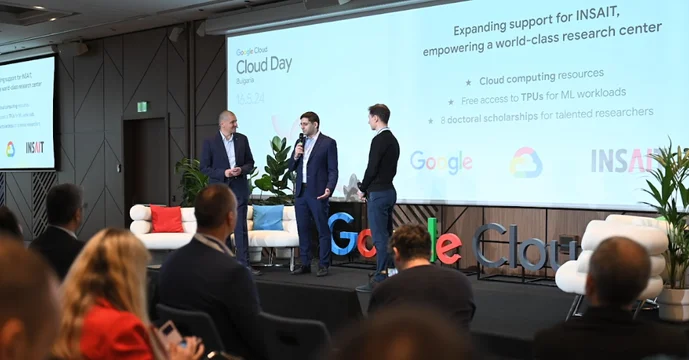
New support for AI advancement in Central and Eastern Europe
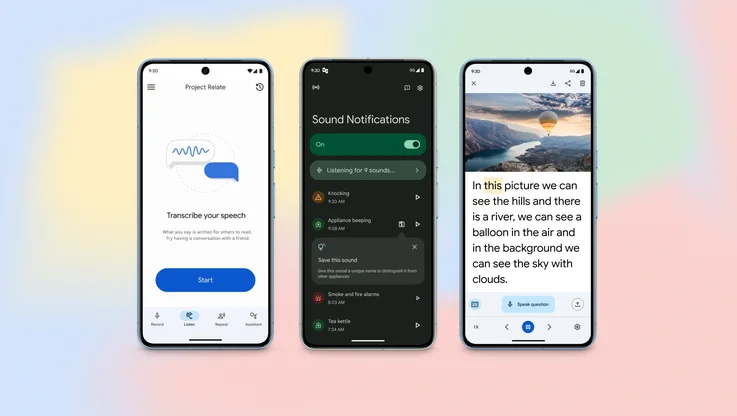
8 new accessibility updates across Lookout, Google Maps and more

Bringing Gemini to Google Workspace for Education
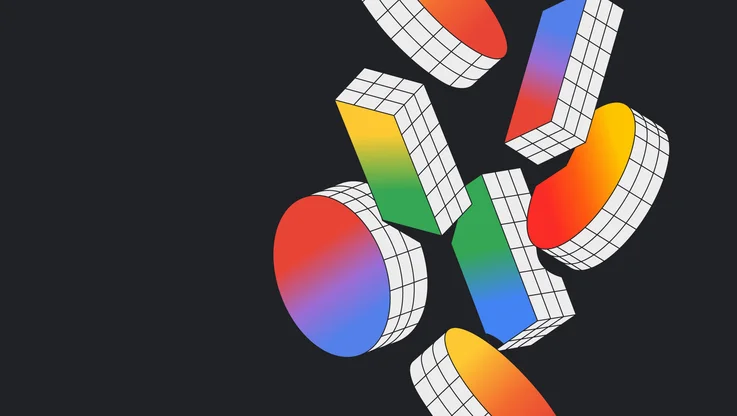
100 things we announced at I/O 2024
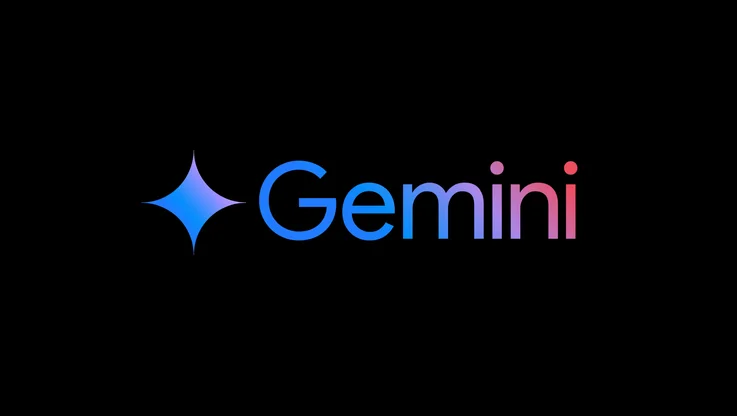
How Google’s AI model Gemini got its name
Let’s stay in touch. Get the latest news from Google in your inbox.

Named for a fire god, radioactive element at ORNL could now 'rewrite chemistry textbooks'
N early 80 years after scientists at Oak Ridge National Laboratory discovered an extremely rare radioactive element called promethium, a team at the lab published a landmark study on the subject that ORNL said could " rewrite chemistry textbooks ."
Research published in Nature on May 22 marks the first time scientists have uncovered key characteristics of the element, though the study could have implications far beyond promethium (No. 61 on the periodic table).
One of the most critical discoveries from the research is the bond length between promethium and surrounding atoms, a previously unknown measurement that unlocks some of the element's properties.
At any given time, only about one pound of promethium exists on Earth. Promethium is used mostly for research, but also in nuclear batteries used for pacemakers and space exploration.
The new research could help scientists expand these applications and potentially discover new ones for an element that's still relatively unexplored.
ORNL is the only producer of promethium-147 in the U.S. Its unique capabilities come from the High Flux Isotope Reactor, one of the world's most powerful research nuclear reactors. The reactor bombards materials with a concentrated beam of neutrons to create unique materials.
Among those materials are plutonium-238 , produced for generators on NASA space missions. There's also californium-252 , used for starting up nuclear reactors.
The High Flux Isotope Reactor, operational for nearly 60 years, is one of the few facilities in the world that can create manmade elements heavier that uranium.
Promethium was kept an ORNL secret until after Manhattan Project
Promethium was first produced as a byproduct of uranium fission at the lab's Graphite Reactor in 1945 by Charles Coryell, Jacob A. Marinsky and Lawrence E. Glendenin.
The scientists named the new element for Prometheus, a Titan and the god of fire in Greek mythology who disobeyed the gods of Olympus by bringing fire to humans. The scientists kept the discovery of promethium secret until years after World War II ended and Oak Ridge's scientific mission moved beyond the Manhattan Project .
Their discovery of promethium filled a gap in the periodic table. Every other element in the group known as lanthanides had already been discovered and studied.
Lanthanides are the 15 elements from No. 57 lanthanum to No. 71 lutetium. They are rare earth elements that are essential to modern technologies such as smartphones, laptops, car batteries, lasers and some cancer treatments.
ORNL research increases efficiency with hard-to-study promethium
For years, studies on lanthanides have not included promethium, in part because of how rare and unstable it is.
The isotope produced by ORNL researchers, promethium-147, has a half life of just 2.6 years. That means by the time scientists have actually produced the radioactive material, it has already started to decay into a different element.
"It is quite an undertaking to prepare to make a reasonable amount of promethium, especially in a chemically pure form," Ilja Popovs, a staff scientist who co-led the study, told Knox News. "Producing and handling sufficient quantities of any isotope of promethium is fairly challenging and requires special facilities and definitely expertise."
It took scientists using multiple world-leading facilities four months to isolate and purify the sample of promethium.
Popovs, along with Alex Ivanov and Santa Jansone-Popova, led a team of 18 authors on the study. The group used ORNL's High Flux Isotope Reactor and hot cells to protect them from radiation. The lab's Summit supercomputer, one of the top 10 fastest computers in the world, also was used in the research.
New promethium discoveries spill into tech
The scientists made new discoveries about lanthanide contraction, a phenomenon in which the elements' atoms get smaller as their atomic number increases, changing their properties.
The team uncovered that the shrinking slows down considerably along the lanthanide series after promethium.
This new discovery could increase efficiency in separating lanthanides, a critical process for using the elements in modern devices.
"Figuring out new and better ways that allow more efficient separation of lanthanides is extremely important, and quite a few scientists and research groups are working in that field," Popovs said. "We hope that we're gonna add an additional piece of information that will allow us to design better processes."
ORNL has legacy of discovering elements
ORNL is credited with the discovery of three elements : promethium in 1945, moscovium in 2003 and tennessine in 2010. Moscovium and tennessine, developed in partnership with a Russian lab, were verified as new elements by the International Union for Pure and Applied Chemistry in 2015.
Overall, the lab has played a critical role in the discovery of nine elements . The other six are rutherfordium, dubnium, seaborgium, flerovium, livermorium and oganesson, the last chemical on the current periodic table.
For Ivanov, one of the scientists who led the study, carrying on the lab's long legacy as a leader in scientific innovation is among the most rewarding parts of the research. ORNL, managed by UT-Battelle, is the Department of Energy's largest science and technology lab.
Daniel Dassow is a growth and development reporter focused on technology and energy. Phone 423-637-0878. Email [email protected] .
Support strong local journalism by subscribing at knoxnews.com/subscribe .
This article originally appeared on Knoxville News Sentinel: Named for a fire god, radioactive element at ORNL could now 'rewrite chemistry textbooks'

1300 682 051

Enquire now

What is intergenerational fairness and what’s it got to do with mental health and wellbeing?

Transforming mental health care with AI

The most popular masters courses in Australia and beyond
Privacy | Legal | Copyright notice | Copyright © 2024. Victoria University CRICOS Provider Code No. 00124K (Melbourne) and CRICOS Provider No. 02475D (Sydney).
people downloaded a course guide in the last 24 hours .
Applicants must hold current registration as a nurse in Australia.
If you are not currently a Registered Nurse (Division 1), you may be interested in studying our Master of Mental Health or Master of Child and Adolescent Mental Health.
If you are not currently a Registered Nurse (Division 1), you may be interested in studying our on-campus Bachelor of Nursing.
You must have a bachelor degree in a cognate discipline (eg. Health Science, Social Work, Education) OR in any discipline with 2 years approved work experience to be eligible for this course. Please see the Entry Requirements for more information or speak to a Student Enrolment Advisor. If you don't currently have a bachelor degree, you may be interested in our on-campus bachelor degrees.
You must have a bachelor degree to be eligible for this course. If you don't currently have a bachelor degree, you may be interested in our on-campus Bachelor of Education.
Together we are beating cancer
- Cancer types
- Breast cancer
- Bowel cancer
- Lung cancer
- Prostate cancer
- Cancers in general
- Clinical trials
- Causes of cancer
- Coping with cancer
- Managing symptoms and side effects
- Mental health and cancer
- Money and travel
- Death and dying
- Cancer Chat forum
- Health Professionals
- Cancer Statistics
- Cancer Screening
- Learning and Support
- NICE suspected cancer referral guidelines
- Make a donation
- By cancer type
- Leave a legacy gift
- Donate in Memory
- Find an event
- Race for Life
- Charity runs
- Charity walks
- Search events
- Relay for Life
- Volunteer in our shops
- Help at an event
- Help us raise money
- Campaign for us
- Do your own fundraising
- Fundraising ideas
- Get a fundraising pack
- Return fundraising money
- Fundraise by cancer type
- Set up a Cancer Research UK Giving Page
- Find a shop or superstore
- Become a partner
- Cancer Research UK for Children & Young People
- Our Play Your Part campaign
- Brain tumours
- Skin cancer
- All cancer types
- By cancer topic
- New treatments
- Cancer biology
- Cancer drugs
- All cancer subjects
- All locations
- By Researcher
- Professor Duncan Baird
- Professor Fran Balkwill
- Professor Andrew Biankin
- See all researchers
- Our achievements timeline
- Our research strategy
- Involving animals in research
- Research opportunities
- For discovery researchers
- For clinical researchers
- For population researchers
- In drug discovery & development
- In early detection & diagnosis
- For students & postdocs
- Our funding schemes
- Career Development Fellowship
- Discovery Programme Awards
- Clinical Trial Award
- Biology to Prevention Award
- View all schemes and deadlines
- Applying for funding
- Start your application online
- How to make a successful applicant
- Funding committees
- Successful applicant case studies
- How we deliver research
- Our research infrastructure
- Events and conferences
- Our research partnerships
- Facts & figures about our funding
- Develop your research career
- Recently funded awards
- Manage your research grant
- Notify us of new publications
- Find a shop
- Volunteer in a shop
- Donate goods to a shop
- Our superstores
- Shop online
- Wedding favours
- Cancer Care
- Flower Shop
- Our eBay store
- Shoes and boots
- Bags and purses
- We beat cancer
- We fundraise
- We develop policy
- Our global role
- Our organisation
- Our strategy
- Our Trustees
- CEO and Executive Board
- How we spend your money
- Early careers
- Your development
Cancer News
- For Researchers
- For Supporters
- Press office
- Publications
- Update your contact preferences
- About cancer
- Get involved
- Our research
- Funding for researchers
The latest news, analysis and opinion from Cancer Research UK
- Science & Technology
- Health & Medicine
- Personal Stories
- Policy & Insight
- Charity News
- Science & Technology
- Health & Medicine
How can we share research together? A co-creation project to make scientific research more accessible

28 May 2024
In this mini-series of three articles, we share a recent PPIE project where we co-created an accessible information sheet based on a journal paper . In this article the PPI co-ordinator, Lisa Whittaker and one of the researchers, Catarina Veiga give an over view of the project and share their experiences of being involved.
Cancer Research UK actively involves people affected by cancer in their work. It is widely agreed that a culture of patient and public involvement and engagement (PPIE) is crucial to ensure research is patient-centric and impactful.
But there is not a one size fits all approach to PPIE.
Cancer research spans across various fields of study, and not all scientific advances necessarily change the patient experience.
Academic research is traditionally produced and shared in ways which do not involve patients. Outputs are therefore often inaccessible to a lay patient and public audience, limiting their reach and impact.
This is something we believe researchers and patients can change, together.
By using a PPIE approach that directly involves patients during the process of conducting and disseminating research, we can work towards making research more impactful.
Using this approach, we co-created and shared an accessible information sheet based on a journal paper.
In this article we share the process and what we learned. We hope to inspire other researchers to do similar projects and come together with graphic designers, artists and importantly people affected by cancer.
Our starting point was the question ‘how can we meaningfully work with patients to make research more widely accessible?’
Ask the experts
We (Catarina and Lisa), together with Dr Adam Szmul and with the support of Cancer Research UK RadNet City of London , ran a focus group to explore how and where patients access information about research. Lisa recruited seven patients via the Cancer Research UK Patient Involvement Network who had previously undergone radiotherapy. In March 2023 we met online to discuss where patients currently access information about research and how they would like to see research shared.
Catarina and Adam spoke about what scientific dissemination looks like, including a brief presentation about one of our research papers – using artificial intelligence to improve proton beam therapy delivery in children with cancer – and the traditional process for publishing in scientific journals versus mainstream dissemination methods such as media articles, blogs and social media posts.
Patients spoke of their motivations to contribute to making future cancer patients’ lives better. They shared their experiences of having radiotherapy. Several were told radiotherapy was the “easiest” treatment but found it very difficult. Many had side effects later attributed to their radiotherapy. They also reflected on how challenging it can be to find reliable and trustworthy information, particularly while going through cancer treatment.
The patients who attended the workshop were very interested in research and highly valued scientific publications.
I was very surprised to learn that patients do try and read scientific research papers, to gain information about their condition or treatment. Knowing that makes it even more important to create information sheets like this one, that can present the main points of a research paper in a comprehensible form.
They spoke about how they try to stick to reputable sources for information including charities like Cancer Research UK and Google Scholar. They all agreed that infographics with links to journal papers are an accessible, interesting way to share research.
The fascinating discussion was captured in the artwork (below) by Jenny Leonard.
From idea to output: the path to co-creation
We felt compelled to act on what the patients had told us and to try to make research more accessible for a lay audience. Our goal was to co-create a sister output to our research paper that made it more widely understandable and to learn how to incorporate PPIE as part of our research culture.
We started with our recently published paper and worked with a smaller group of four of the patients, and graphic designer Gill Brown to co-create an accessible output.
We planned three further online workshops each with a defined goal: 1) discussing the paper and identifying the key messages, 2) brainstorming how the key messages could be illustrated in an information sheet, and 3) revising and agreeing a final draft of the accessible output.
This was very much new territory for all of us. We began in June 2023 and finalised the output below ( see fullsize here ) in early November, taking longer than anticipated for several reasons.
We had an initial plan but we had to adapt and compromise as we went. We needed time in between workshops to review and reflect on discussions and act on feedback from the patients. The production of the information sheet also took a bit longer, as it required more back and forth with the designer than we anticipated – and we had to fit this into everyone’s busy schedules.
Originally, we wanted to co-create an infographic of our journal paper. However, we all agree that our output more closely resembles an information sheet or even academic poster. It has much more content than we initially planned.
As we discussed the paper with the patients, it became clear that we needed more context for a lay audience to truly understand the key messages of this research. And more importantly, it became clear that they wanted to know more!
This process challenged us to find a balance between scientific accuracy and accessibility for lay people. We distilled as much as we could by understanding the key messages from the patients’ point of view. This further highlights the need for more awareness of radiotherapy and radiation research.
I really like it, it does resemble more of an academic poster than an infographic but it summarises and shares some extremely important research and to go from a 20 page journal paper to what we have is amazing.
The co-creation process and timeline
The starting point was intimidating. The scientific paper was long and written for the highly specialised audience of radiotherapy physicists, computer scientists and engineers. It described in intricate detail complex methodology and experiments unfamiliar to lay audiences.
To provide some direction, we shared a highlighted paper with the patients before the first workshop. In this way, patients had the opportunity to read a full scientific publication while also having some guidance on what the researchers thought were the most important concepts.
What we realized during the first workshop was that we could not launch straight into a discussion about this specific paper without first explaining what radiotherapy is and how it works. It was surprising to learn from people with experience of radiotherapy how little they understood about their treatment and how much more is known about chemotherapy and surgery. This is something other patients have told us in previous projects including Radiation Reveal .
From this first discussion we decided to break down the sheet into key messages/sections. During the second workshop, two weeks later, we talked about how we might use illustrations. This resulted in lots of ideas but also some outstanding questions and clarifications about the science.
We had a gap of ten weeks before our third and final workshop. During this time the researchers and PPIE coordinator worked with the graphic designer to incorporate all the suggestions from the patients into an A3 information sheet draft that could be presented at the final workshop. It was important for everyone that the sheet provided clear information on radiotherapy and the motivation behind the research. We also wanted the information sheet to be faithful to what this research paper was about.
We invited a clinician, Dr Pei Lim, to join our final workshop in September. Together we went through the draft information sheet, reviewed the language used and the clarity of the figures, and proposed changes to the layout. Further tweaks and changes meant the final version we were all happy to share was finalised in November.
What we learned along the way
We realized more workshops and/or perhaps having a slightly smaller group would have been beneficial to speed up the project development. While we considered that the aim was clear at the start, establishing a tighter plan with clearer expectations and deadlines might be beneficial in the future. It was no easy task to make sure that everyone in this diverse team understood enough of the science.
Our approach of providing the full paper for the participants without some background information to read likely made some of the discussions very challenging and the co-creation process longer. We experienced first-hand how inaccessible academic papers can be. While having an extra workshop focused just on bringing more context is an option, we also learned a lot by going through these difficult discussions. It helped us to dive deep into the barriers of scientific writing, to identify and address key questions and misconceptions related to the research area, and to understand what aspects of the science were the most interesting to lay audiences.
We were genuinely surprised by some of the aspects of the research that created interest and raised questions. Some of which were rather technical. Patients wanted to understand the different types of scans done during radiotherapy and questioned us about how AI works. They wanted to understand if the technology would negatively impact treatment times. So we argue rather than shy away from this challenge it is crucial we strive to make cancer research more accessible.
Having the right team makes way for success. The input from the graphic designer, Gill, and Lisa were instrumental to the project’s success. They actively drove and participated in the co-creation process, contributing with perspectives that were different from but complementary to those of the researchers and patients.
Lisa had training and experience to support patients, but in hindsight it could have been beneficial to also ask a clinician to be present in all the workshops as the discussions can naturally drift into sensitive topics. Patients bring their lived experience and may have many unanswered questions about their own treatment. Including a clinician gives the opportunity to ask these questions before focusing on the goals of the PPIE project.
In the future we want to initiate conversations with diverse audiences earlier in the research timeline (i.e., before a paper is published). We learned so much from this activity and wish for it to more than a ‘one-off’ activity. As such, a detailed PPIE plan s involving one our patient representatives, Holly, was included part of a recently submitted research funding application. Fingers crossed!
Dr Lisa Whittaker
Dr Lisa Whittaker is an experienced researcher and public engagement professional. Since completing her PhD in 2011, Lisa’s research, support and public involvement and engagement (PPIE) work has been focused on improving the lives of people affected by cancer. Lisa has worked within charities and universities. She is currently based at King’s College London supporting researchers in the School of Biomedical Engineering and Imaging Sciences and researchers funded by CRUK RadNet City of London.
Dr Catarina Veiga
Dr Catarina Veiga is an Associate Professor and lead of the Paediatric Radiotherapy and Imaging (PRIma) group at University College London. Catarina’s research intersects physics, engineering, and radiation oncology, focusing on medical imaging analysis and disruptive technologies to verify radiotherapy delivery and understand how radiation-induced side effects develop. Her research goal is to ultimately reduce long-term side effects from having radiotherapy during childhood. Catarina holds a BSc in Physics from the University of Minho and an MSc in Medical Physics from the University of Porto. Catarina was awarded her PhD in Medical Physics at University College London where she worked on computational methods to verify accurate radiotherapy delivery. Post-PhD, she has worked on projects related to radiation-induced lung damage before establishing the PRIma group with a focus on paediatric cancers.
Tell us what you think
Leave a reply cancel reply.
Your email address will not be published. Required fields are marked *
Save my name, email, and website in this browser for the next time I comment.
Read our comment policy .
Highlighted content
An animal's guide to staying safe in the sun, hpv vaccine slashes cervical cancer rates across society, the ‘mystery’ culprit causing kidney cancer worldwide, proteins in blood could give cancer warning seven years earlier, are ultra-processed foods linked to cancer, following cupid’s arrow: a new blood test to find cancer of unknown primary, making cancer screening work for you, can vaping cause changes in our cells, that cancer conversation podcast - one to one with dr anisha patel, related topics.
- Radiotherapy
- Teenagers and young adults
- CRUK City of London Centre

IMAGES
VIDEO
COMMENTS
This unit focuses on undertaking a literature review and developing a research proposal for a substantial discipline related project. The project will then be executed in NEF4201 Research Project 2. Wherever possible, projects will be sourced from industry partners. Projects will be undertaken individually by each student although a number of ...
The IT Research Project 1 unit is designed for marking the pinnacle of IT students' programming and research expertise, encompassing diverse IT techniques like computer vision, natural language processing, blockchain, cyber security, data mining, database design, etc.
This course is Pass/Fail, andstudents need to pass both the presentation and the report assessment toPass the course.The written report should aim to identify at least: (1) the context, (2)the problem, (3) the main research question(s), (4) the researchapproach, (5) a preliminary, but concrete and feasible, plan.To limit the burden on both ...
If you are a talented and motivated student, the VU Honours Programme offers you, through the research project of the Honours Programme, the opportunity to invest more in your own area of study and to broaden your horizon. For this research project, you will focus on a high-quality, scientific research project that is unique for each student.
They also get a chance for oral feedback during their presentations of the research proposal and final research project. Teaching Methods Tutorials.Please note: attendance is mandatory for the tutorials. Method of Assessment 1. Presentation of Research Proposal (10%)2. Research Proposal (40%)3. Presentation of Final Research Project (10%)4.
The goal of the Research Project is to enable students to master all steps in empirical research, that is (1) identifying a research question, (2) designing, operationalising, and conducting research, (3) analysing the gathered data and (4) presenting the data obtained from that research both in writing and orally.
Summarize the findings/results of your data analysis and state how the outcomes of your research relate to the project objectives. It may range from 2-4 pages. Do not include examples/ illustrations or your own opinion in this part of the report. (Hint: Provide gist of the report by relating sub-section 1.5 with 2.4)
1/09/23 → 31/08/25. Project: Research. Templeton Grant: "A valid statistical framework for establishing unconscious cognition" Fahrenfort, J. 1/09/23 → 31/08/25. Project: Research. File. TAP dementia - digital assessment of daily functioning in primary care. Butterbrod, E.
Research project 1 is 33 EC points Research project 2 is either 39 EC points (if an extra optional course is followed in year 2) or ... external research project, requiring a VU supervisor and second VU assessor apart from the on-site UvA supervisor. The Department of Ecological Sciences (DES) of the VU offers placements and many staff members ...
This unit enables students to develop an extended research project, as an individual or a team member. The research project will focus on a current pressing issue for the workplaces students will enter. Students will use the project to develop and refine advanced skills in research, conceptual and critical thinking, writing and project management.
EDU630 Research Project. EDU630 Research Project. In this course you have to submit a research project report. The pre-requisite to take the course is the successful completion of the course 'Research Methods'. This course can be selected in the 7th semester subject to successful completion of 35 courses (105 credits) in the first 6 semesters.
Research Project Part A. Unit code: NEF6001 | Study level: Postgraduate. (Generally, 1 credit = 10 hours of classes and independent study.) For Master of PM students: EPM5640 Research Methods. For Master of Applied IT students: Minimum 60 CPs. (Or equivalent to be determined by unit coordinator)
EDU630 Research Project In this course you have to submit a research project report. The pre-requisite to take the course is the successful completion of the course 'Research Methods'. To facilitate students the report shall be completed in six stages. At each stage you may refer back to the course STA630 'Research Methods'. 1.
Faculty of Earth and Life Sciences VU University Amsterdam Version: approved by the Faculty Board September 19, 2014; adjustment adopted on 20 March 2015 p. 1/15 Student Placement (Internship) and Research Project Regulations 1. Preamble The student placement or research project is an important part of the Master's and Bachelor's
It is a collaborative project between VU, SCP and the Bureau Studentenartsen Amsterdam. This research is conducted in the context of 'Expertiselab Young Informal Caregivers' that is part of the Startimpuls JOIN (Young people in a resilient society. Towards new arrangements for inclusivity and participation).
EDU630 Research Project In this course students have to submit a research project report. The pre-requisite to take the course is the successful completion of the course 'Research Methods'. To facilitate students the report shall be completed in six stages. At each stage you may refer back to the course STA630 'Research Methods'. 1.
With the exception of research project 1, VU will initiate the following research projects (2-7) with the aim to publish in peer-reviewed academic journals. Depending on data quality and number of participating respondents, equivalent research projects and publications aims may be pursued. 1. In-depth analysis of L4B program efficacy: Short ...
Chapter 1) Introduction 1.1 Introduction of the study: In this part, a brief and comprehensive introduction of the topic under study is given. It includes: Introductory paragraph Description of the project title .i.e. what this project is all about? Rationale - Why this research is needed?
1.5 Flash is the newest addition to the Gemini model family and the fastest Gemini model served in the API. It's optimized for high-volume, high-frequency tasks at scale, is more cost-efficient to serve and features our breakthrough long context window. While it's a lighter weight model than 1.5 Pro, it's highly capable of multimodal ...
The research project is the culminating experience of the student's course and provides students with the opportunity to apply and integrate their knowledge and skills gained from earlier years. This unit continues from Research Project 1 and students are expected to carry out the project in accordance with the project proposal developed therein.
The new research could help scientists expand these applications and potentially discover new ones for an element that's still relatively unexplored. ORNL is the only producer of promethium-147 in ...
Unit code: HNO7901. Credit points: 12. Study level: Postgraduate. Location: Victoria University Online. Prerequisites: HNO6004 - Evidence and Research for Practice. In this unit students will investigate a significant practice issue in their specialisation through undertaking a research project. Students will strengthen their evidence-based ...
In this mini-series of three articles, we share a recent PPIE project where we co-created an accessible information sheet based on a journal paper. In this article the PPI co-ordinator, Lisa Whittaker and one of the researchers, Catarina Veiga give an over view of the project and share their experiences of being involved.